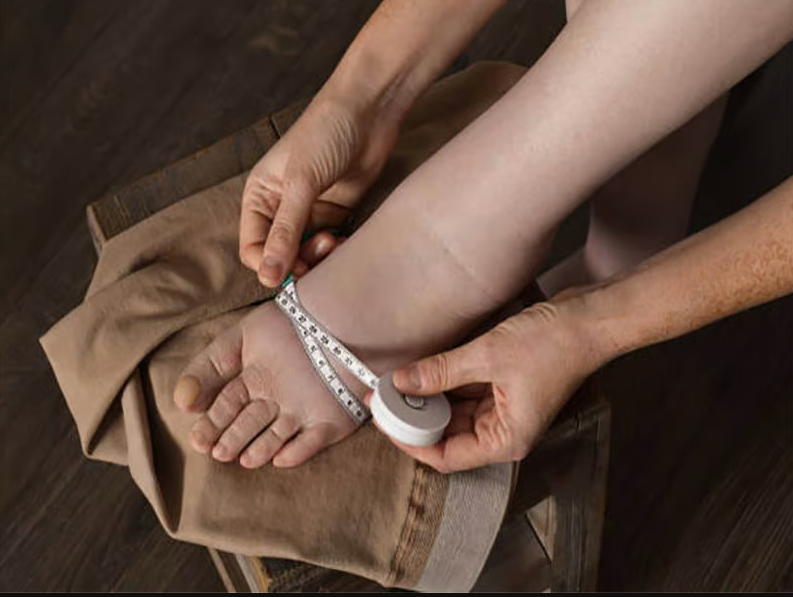Lymphedema in Men vs Women: Understanding the Key Differences and Impacts
Lymphedema, a condition characterized by the abnormal buildup of lymphatic fluid, often results in swelling, particularly in the limbs. Though it can affect anyone, the way lymphedema presents, the causes, and the impacts can differ significantly between men and women. Understanding these gender differences is crucial for effectively diagnosing, treating, and managing the condition. This blog post will explore how lymphedema affects men and women differently, delve into the causes and symptoms, and examine treatment approaches focusing on current trends and research.
Definition of Lymphedema
Lymphedema occurs when the lymphatic system drains excess fluids from the tissues and becomes compromised. This disruption can result in the accumulation of lymphatic fluid, leading to swelling in affected areas. Lymphedema can be categorized into two types: primary lymphedema, which is present at birth or develops over time due to congenital abnormalities, and secondary lymphedema, which typically develops after an injury or damage to the lymphatic system—often due to surgery or radiation used in cancer treatment.
Importance of Understanding Gender Differences in Lymphedema
Understanding the gender differences in lymphedema is vital for effective diagnosis and treatment. Men and women can experience different causes of lymphedema, as well as unique symptoms and challenges in managing the condition. For instance, women with breast cancer may be more likely to experience lymphedema due to the removal of lymph nodes during surgery or radiation treatments, while men may be more affected by prostate cancer treatments. These distinctions are essential to recognize when tailoring treatment plans.
Overview of the Blog Post Structure
This article will begin by reviewing the prevalence and causes of lymphedema, highlighting any gender-specific differences. We will then explore the symptoms and diagnostic challenges men and women face. Finally, we will examine the treatment and management options for both genders, emphasizing the importance of personalized care. By the end, you’ll have a comprehensive understanding of the key differences in how lymphedema affects men and women and why this knowledge is critical for improving patient outcomes.
Prevalence and Causes in Men vs Women
Statistical Differences in Lymphedema Occurrence Between Men and Women
The prevalence of lymphedema can vary significantly between men and women. Women, especially those diagnosed with breast cancer, are at a higher risk of developing lymphedema due to surgeries such as lymph node removal and radiation treatment. According to research from the University of Michigan, approximately 20–30% of women who undergo breast cancer surgery experience lymphedema, particularly in the upper extremities.
In contrast, men are less commonly diagnosed with lymphedema, but certain cancers, such as prostate cancer, also pose a significant risk. Men with prostate cancer who undergo prostate cancer treatments—such as radiation therapy or lymph node removal—can develop lymphedema in the lower extremities. Lymphedema in men tends to be less discussed, leading to underreporting and less research, but it’s just as impactful on quality of life.
Common Causes of Lymphedema in Both Genders
While lymphedema can occur due to various reasons, its most common causes in both men and women include surgery, radiation therapy, and cancer treatments. For women, breast cancer treatment, particularly breast cancer surgery involving lymph node removal, is a leading cause. Men, on the other hand, may experience lymphedema after prostate cancer surgery or radiation treatment, both of which can damage the lymphatic system and disrupt lymphatic drainage.
Other conditions, such as melanoma or ovarian cancer, may also cause lymphedema in both genders. Additionally, infections and injuries that affect the lymphatic vessels can cause lymphedema by obstructing the normal flow of lymph fluid. These factors can result in swelling and discomfort, making it essential for both men and women to monitor their condition closely after treatment for cancer or surgery.
Unique Risk Factors for Men and Women
While both men and women can develop secondary lymphedema following cancer treatments, there are distinct risk factors for each gender. For example, women with a history of breast cancer are at a higher risk of developing lymphedema due to the removal of lymph nodes during surgery or radiation. Women with breast cancer-related lymphedema typically experience swelling in the upper extremities, often in the arms or chest area.
Men, on the other hand, may experience lymphedema in the lower extremities, particularly following prostate cancer treatment. The lymph nodes in the pelvic region can be damaged during surgery or radiation, leading to swelling in the legs, groin, and sometimes the abdomen. The risk of developing lymphedema in men with prostate cancer is lower than in women with breast cancer, but it is still a significant concern.
Symptoms and Diagnosis
Typical Symptoms of Lymphedema
The symptoms of lymphedema can vary depending on the severity of the condition and the area affected. Common signs include swelling, a feeling of heaviness, restricted movement, tight skin, and discomfort. In severe cases, lymphedema may lead to extreme swelling, thickened skin, or the formation of fluid-filled sacs known as lymphoceles.
The most common areas affected by lymphedema are the arms and legs, though it can affect other body parts. In women, upper extremity lymphedema is more common due to breast cancer treatments, while men are more likely to develop lymphedema in the lower extremities due to prostate cancer treatments. Both genders may also experience swelling in the torso or abdomen, depending on the location of lymphatic damage.
Differences in Symptom Presentation Between Men and Women
There are key differences in how men and women present symptoms of lymphedema. Women are more likely to experience swelling in the upper limbs, often following breast cancer surgery. The arms may feel heavy, tight, or painful, and patients may notice skin changes, such as a shiny or stretched appearance. Lymphedema can also impair the function of the arm, leading to difficulty with daily activities like lifting or reaching.
In men, lymphedema typically presents in the lower limbs, including the legs, feet, and sometimes the genital area. The swelling can cause difficulty walking, and the legs may feel heavy or weak. In some cases, men may experience swelling in the abdomen or groin area, mainly following prostate cancer treatments. The progression of symptoms can be slow but may worsen over time without proper management.
Diagnostic Approaches and Challenges Specific to Each Gender
Diagnosis of lymphedema typically involves physical examination, patient history, and imaging tests like lymphoscintigraphy or ultrasound. While the general diagnostic approach remains the same, gender-specific challenges may arise. For example, women with breast cancer-related lymphedema may have a more straightforward diagnosis due to the well-established connection between breast cancer treatment and upper extremity swelling. However, men with prostate cancer-related lymphedema may face delays in diagnosis, as lymphedema is often less associated with prostate cancer and may be misdiagnosed or overlooked.
In both cases, a thorough medical history is essential for determining the likelihood of lymphedema. For instance, patients who have undergone surgery or radiation therapy, particularly in the pelvic or breast area, should be closely monitored for signs of swelling.
Treatment and Management
Overview of Treatment Options Available for Lymphedema
Treatment for lymphedema typically includes a combination of strategies to improve lymphatic drainage and reduce swelling. Common treatments include compression garments, manual lymphatic drainage (MLD), exercise, and skincare. Compression garments help prevent fluid buildup by applying pressure to the affected area, while MLD is a form of massage therapy that encourages the flow of lymphatic fluid through the lymphatic vessels.
Additional therapies may include pneumatic compression devices, which apply intermittent pressure to the limbs, and surgery in severe cases. For patients with cancer-related lymphedema, treatments may also focus on managing the underlying cancer or any complications caused by cancer treatments, such as radiation.
Gender-Specific Considerations in Treatment Approaches
While the basic treatment approaches for lymphedema are similar for men and women, there are important gender-specific considerations. For women with breast cancer-related lymphedema, the primary focus is often on managing upper extremity swelling. This may involve specialized compression garments for the arms, MLD, and exercise tailored to the upper body.
Men with prostate cancer-related lymphedema may require different types of compression garments and MLD techniques. Since the swelling tends to occur in the lower extremities, specialized devices for the legs and lower body may be needed. Additionally, men with lymphedema may face unique challenges, such as the impact on mobility and function, which can affect their quality of life.
Importance of Tailored Management Plans for Men and Women
Given the differences in how lymphedema presents and impacts both men and women, it is crucial to develop individualized management plans. This personalized approach ensures that treatment is suited to the patient’s specific needs. For example, women with breast cancer may benefit from targeted therapy focused on the arms and chest, while men with prostate cancer may need more intensive care for the lower body. Collaboration between healthcare providers, including lymphedema therapists and cancer specialists, is essential for optimal care.
Conclusion
Recap of Key Differences and Impacts of Lymphedema in Men and Women
Lymphedema is a debilitating condition that affects both men and women, with key differences in its prevalence, causes, symptoms, and treatment. While women are more likely to experience lymphedema after breast cancer treatment, men are more commonly affected by prostate cancer-related lymphedema. Understanding these gender differences is crucial for early diagnosis, personalized treatment, and improved outcomes.
FAQs
Q: What is lymphedema and how can it develop?
A: Lymphedema is a condition characterized by the accumulation of interstitial fluid due to the dysfunction of the lymphatic system. It can develop as a result of surgery that removes or blocks lymph nodes, often related to cancer treatments such as those for breast cancer or lung cancer.
Q: Are men just as likely as women to develop lymphedema?
A: Yes, men are just as likely as women to develop lymphedema, particularly if they have undergone cancer treatment that affects lymphatic function.
Q: What are the common risk factors for lymphedema in men and women?
A: Common risk factors for lymphedema include cancer treatments, particularly surgeries that remove lymph nodes, radiation therapy, obesity, and a history of infections affecting the lymphatic system.
Q: How does lymphedema affect breast cancer survivors?
A: Women with lymphedema after breast cancer treatment often experience swelling in the arm or breast area due to disrupted lymphatic function. This condition can significantly impact their quality of life and may require ongoing treatment.
Q: What are the stages of lymphedema?
A: Lymphedema is often classified into stages based on severity: Stage 0 (subclinical), Stage 1 (mild swelling), Stage 2 (more severe swelling), and Stage 3 (severe swelling and skin changes). Early detection and treatment are crucial for better management.
Q: Can lymphedema occur in the lower extremities?
A: Yes, lymphedema can occur in the lower extremities, and it may develop due to surgery or radiation affecting the lymph nodes in the groin area or due to other factors that compromise lymphatic function.
Q: What is secondary lymphedema and how does it differ from congenital lymphedema?
A: Secondary lymphedema develops as a result of damage to the lymphatic system, often due to cancer treatments or injuries, whereas congenital lymphedema is a condition present at birth due to genetic factors affecting lymphatic development.
Q: How can cancer treatment lead to the development of lymphedema?
A: Cancer treatment, particularly surgeries that remove or block lymph nodes, may compromise lymphatic function, leading to an accumulation of fluid and resulting in lymphedema after treatment.
Q: What are the treatment options available for managing lymphedema?
A: Treatment for lymphedema may include compression garments, manual lymphatic drainage, exercise, and skincare. In some cases, more advanced interventions like surgery may be considered to improve lymphatic flow.



